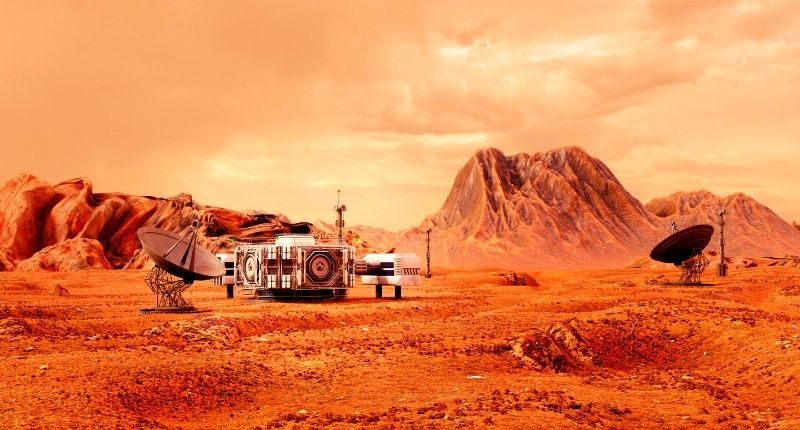- There was once water on Mars, which means there could have been life
- Elon Musk believes a million people could be living on the red planet by 2050
- Prof Saydam from UNSW doubts the will exists to develop the required technology
With the recent landing of NASA’s rover Persistence, the tantalising prospect of ‘life on Mars’ is back on peoples’ minds.
While we may not yet be living on the red planet à la Matt Damon in The Martian, new photographic evidence seems to suggest there was once flowing water, and where there is water, perhaps microbial life.
And if there was once life, could there be life in the future?
Might we be buying our place in the sky, within our lifetime?
Life on Mars?
It’s not as out of this world as it might appear. As long as autonomous mining processes continue their development, UNSW Professor Serkan Saydam believes Mars could be colonised by humans by 2050.
“Everything is all about water,” Prof. Saydam said. “You use water as life support, plus also being able to separate out the hydrogen to use as an energy source.
“The process for having humans on Mars will be to set up operations, go there and produce water with robots first, and then be able to extract the hydrogen to make the energy ready before people arrive.
“Innovation in robotics and autonomous systems are clearly important so we have the water ready and the hydrogen separated and ready for when human beings land.
“At the moment, we don’t have the ability to do it. There is a significant research effort … about the best way to do it, but there is no consensus yet. It also depends on how many people we expect to be living on Mars. Is it five, or 5,000, or 50,000, or even more?”
Professor Serkan Saydam, UNSW
Tesla and SpaceX entrepreneur Elon Musk believes there could a city of a million on Mars by 2050, transported there by a thousand starships, with three rocket launches per day.
Prof Saydam thinks that is unrealistic by mid-century.
“I think the technology is ready and we already have the knowledge, but the main problem is having the focus,” said Prof Saydam.
However, things could be changing.
United Launch Alliance, a joint venture between Lockheed Martin and Boeing, has announced they will pay US$500kg per kilogram for fuel – derived from water – supplied on the moon. That rises to $3,000 per kilogram if the fuel is available in a low-earth orbit.
“That immediately creates a market,” Prof Saydam said. “If Elon Musk does what he says and puts people on the surface of Mars in 20 years, then that also creates a market.
“I believe a colony on Mars is going to happen, but … first of all we will do these activities on the moon and have a colony there. Then we can use the moon as a petrol station to get to Mars and beyond.”
Little green Martians? Maybe not. But the ability for life on Mars is not as unworldly a notion as once thought.





